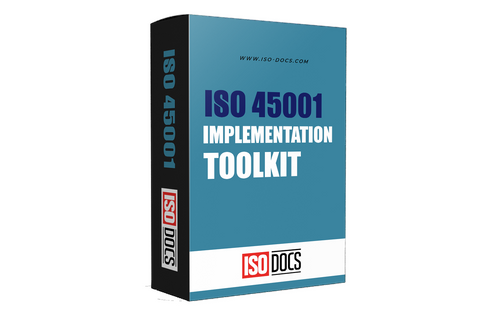ISO 45001 Documented Information Template
Introduction
Safety is knowledge in the context of Occupational Health and Safety (OHS). The international standard of occupational health and safety management systems, ISO 45001, requires that the controls of documented information be strict, to achieve consistency, effective and legal management of health and safety risks. The term documents and records has been replaced in the ISO 45001 concept of documented information to reflect current management system thinking. This change focuses on the content, as well as on the accessibility, protection, and management of important data and knowledge resources.

The Changed Landscape: Documents And Records To Documented Information
The ISO 45001 supersedes the previous distinctions of documents (policies, procedures) and records (evidence, logs) by defining documented information. Information that is documented now includes:
-
Documentation that defines how things should be done (e.g., policies, manuals, procedures).
-
Documents that have evidence of activities and outcomes (e.g., inspection reports, audit findings, training records)
- The media through which information is archived and handled (paper, digital files, videos, audio, cloud-based systems)
This participative word embraces the diverse forms and changing technology, and this term invites organizations to adopt diverse and flexible documentation methods that are in tandem with their operations.
Why Recorded Data Is Important In ISO 45001?
1. Provides Consistency and Compliance: Coherent documentation directs the uniform performance of key health and safety tasks within an organization.
2. Meets Legal and Regulatory Requirements: Documentation is used as a source of evidences during audits, inspection, regulatory reporting and legal transactions.
3. Assists in Risk Management: Documented information can be used to identify risks, monitor incidents, control and analyze trends.
4. Promotes Awareness and Communication: Available manuals, safety instructions and training resources facilitate understanding and participation among workers.
5. Enables Continual Improvement: Nonconformity records, audits and management reviews are source of learning.
6. Shelters Institutional Knowledge: Safeguards against loss in case of staff attrition or change of organization.
Organizations that fail to perform adequate documentation face inconsistencies, legal punishments and even operational failures.
Problems And Remedies To Documented Information Management
- Over-Documentation: There is a risk of over-complexity which results in document fatigue.
-
Remedy: Use Solution Focus to identify what is important in documents and user requirements.
- Decentralized Storage: Risk of information silos resulting in inconsistent practices.
-
Remedy: Store documents in a common system that can be accessed by all the concerned users.
- Updating Lag: Stale information will cause non-conformance and errors.
-
Remedy: Automatic notifications of document examination and recertification.
- Cultural Resistance: Personnel can work around documentation.
- Remedy: Spread the good news and make processes easier.

Benefits Of Good Documented Information Control
1. Facilitates Compliance: ISO 45001 and regulatory audit compliance is easy to meet.
2. Enhances Consistency and Quality: Less variation in the implementation of safety practice.
3. Enables Traceability: Provides the root cause analysis and incident investigation by using extensive records.
4. Increases Training and Awareness: Performs credible and updated sources of references to employees.
5. Facilitates Data-Driven Decision-Making: Presents past data to be used in constant improvement.
New Tendencies In The ISO 45001 Documented Information.
-
Integration with Mobile Apps: Allowing real-time data capture, hazard reporting and procedure access everywhere.
-
Use of Multimedia: Video tutorials, voice records and interactive e-learning to engage.
-
Laws: Automated compliance monitoring of currency and regulatory updates of documents.
- Audit Trails Blockchain: New thinking in terms of verifiable and unalterable records.
Conclusion
The glue which binds the different components of an effective ISO 45001 occupational health and safety management system together is documented information. It gives the evidence that the policies, procedures, controls and improvements are not on paper but are working to provide safe and compliant operations of the work place. Through an inclusive, yet adaptable, thinking concerning documented information, comprising of creation, control, accessibility and review, organizations are in a better position to secure workers, fulfill legal requirements, and in the process, achieve constant safety performance.


